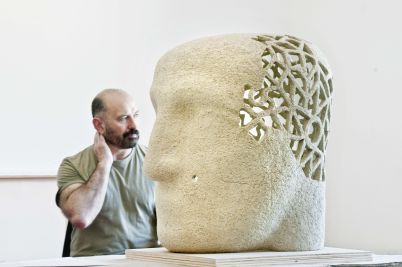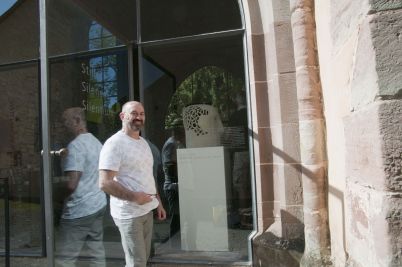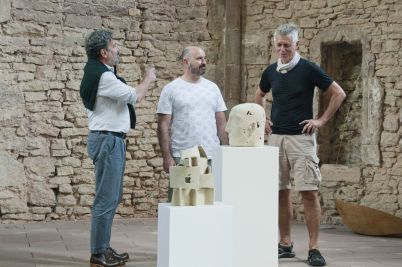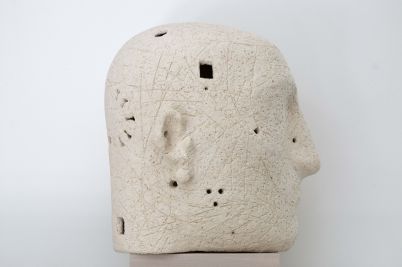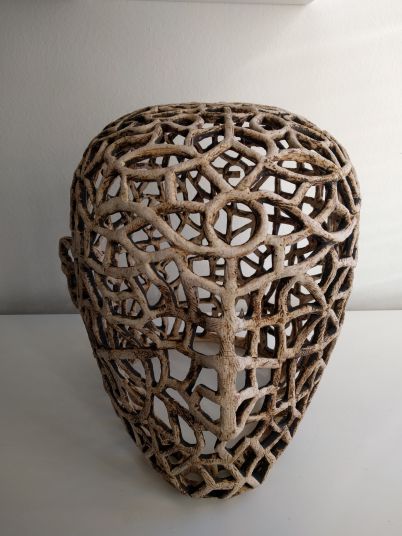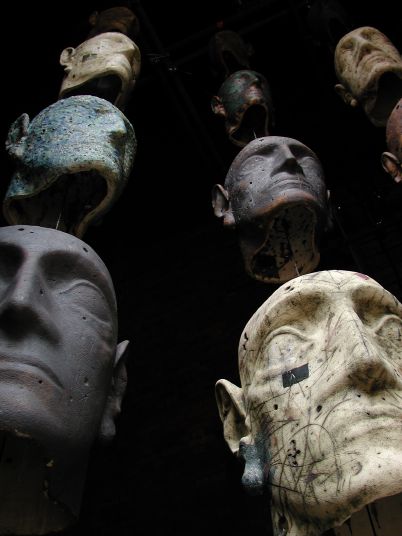Windows meanwhile the worlds
Genc MulliqiPeter Michael Lupp
The squat architecture of the Romanesque period allowed a rather dim light to flood the interior of the churches through relatively small round-arched windows. The Gothic period then began to raise the masonry "skyward" with the structural support of buttresses. This also allowed the construction of slender, tall traceried windows that alluded to the Trinity and "right measure" with geometric stone ornamentation. With biblical motifs in stained glass, these stained glass windows spread a transcendence inside through the "divine [rich] light" that was meant to convey a sense of the heavenly Jerusalem.
Against this cultural-historical background, tracery windows were created in the wall surfaces, the choir and the apse, of the former priory church of Wintringen in the late Gothic period.
During the 30-year war the priory church was destroyed except for the remains of the choir and with it the medieval windows. During the reconstruction in the 17th/18th century - as "Wintringer Chapel" - a baroque arrangement of the windows was chosen.
In 2020, the Albanian sculptor Genc Mulliqi refers in his work at the cultural site Wintringer Chapel to the windows as a metaphorical "light bridge" between the interior of the formerly sacred space and the outside world. He translates the change of view between the inside and outside of the chapel, which acts on the eyes like a pull out towards the sky and nature. In doing so, he focuses on the choir window, which behind the altar faces east toward the "light of the world." The view out into nature falls on a sequoia tree [Sequoia gigantea] that is over 100 years old.
Inspired by this interplay, Genc Mulliqi has sculpted an oversized head sculpture out of clay, which he sees as a representative of the human being. The artist has deliberately created a miniature of this choir window at a central point in the back of the sculpture's head as a link to further ornamental formations in the top of the skull. In this way he indicates that the perception of the human being from the inner space into the outer world is by no means influenced by the visual faculty alone and often even leads to unreal perceptions and corresponding action. Thus it is also to be understood that in his head sculpture the representation of the eyes is missing.
Genc Mulliqi rather alludes to the far-sightedness or the transparency of man, that both are mostly only possible after the human eye is saturated and the superficially visible recedes into the background. If the human being dares moments of being alone with closed eyes, the space increasingly condenses to the introspection. In these moments of contemplation he can clarify what is essential and what is to penetrate from the inside to the outside, now translated into new images. An imaginary window to transcendence in the meantime of the inner and outer world now becomes a sluice at which the mental processing between light and shadow comes into flow.
With this idea Genc Mulliqi symbolically transfers the choir window of the Wintringer Chapel as a quotation into his head sculpture. Through this imaginary window, man can look at his seemingly external mirror worlds from the inside of the room and reflect them in depth. This window allows in the figurative sense to advance from the earthly bias into the unlimited.
From this limitlessness, entirely new images can emerge - as if by chance, says Genc Mulliqi. Unconsciously, therefore, also arose the ornaments that the artist has attached to the window in the skullcap of his sculpture. These pictorial ornaments leave room for interpretation: they want to illustrate that images are stored in every human being that lie beyond comprehensible meaning. However, these images deposited deep within us can be transformed into visible images in an artistic act, thus allowing the viewer to gain entirely new insights.
On another level, the artist also wants his work to visually negotiate the relationship between man and nature. The field of vision through the "window" out into the beauty of creation, he sees as an impulse for change. Genc Mulliqi understands this change of view as a moment of reflection on one's own position between senseless consumption and far-sighted thinking for the preservation of this unique biosphere.
Thus, a subtle methodology to new seeing is also present in this work. The reference to transcendence, as the Gothic master builders hoped with their metaphor of light through the window design, in connection with the sustainable [good] life is, so to speak, inescapable.
Biography
Genc Mulliqi, born 1966 in Albania, studied at the Academy of Arts in Tirana, 1999 Master of Arts, London Wimbledon School of Art, lives and works in Tirana/Albania as head of the sculpture class at the Faculty of Fine Arts of the Tirana School of Art. Solo and group exhibitions in Albania, Germany, Belgium and Great Britain, among others.
Biography in English and Albanian
Genc Mulliqi was a guest artist at KuBa - Kulturzentrum am EuroBahnhof e.V. Saarbrücken in spring 2020. During his stay he also visited the cultural site Wintringer Chapel. After a discourse on site, the site-specific head sculpture described here was created in his studio at KuBa. The Kulturzentrum am EuroBahnhof (KuBa) in Saarbrücken, the capital of Saarland, is a cooperation partner of the project. Further works by the artist will be exhibited there in the course of 2020.
www.gencmulliqi.com
www.kuba-sb.de




